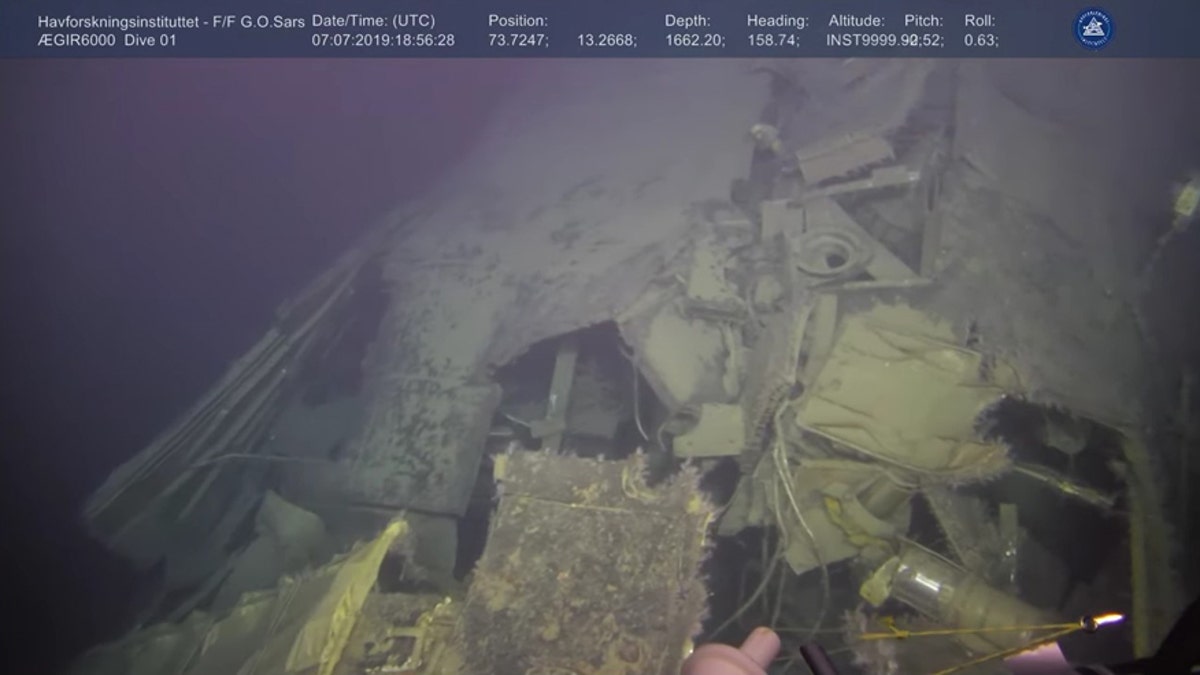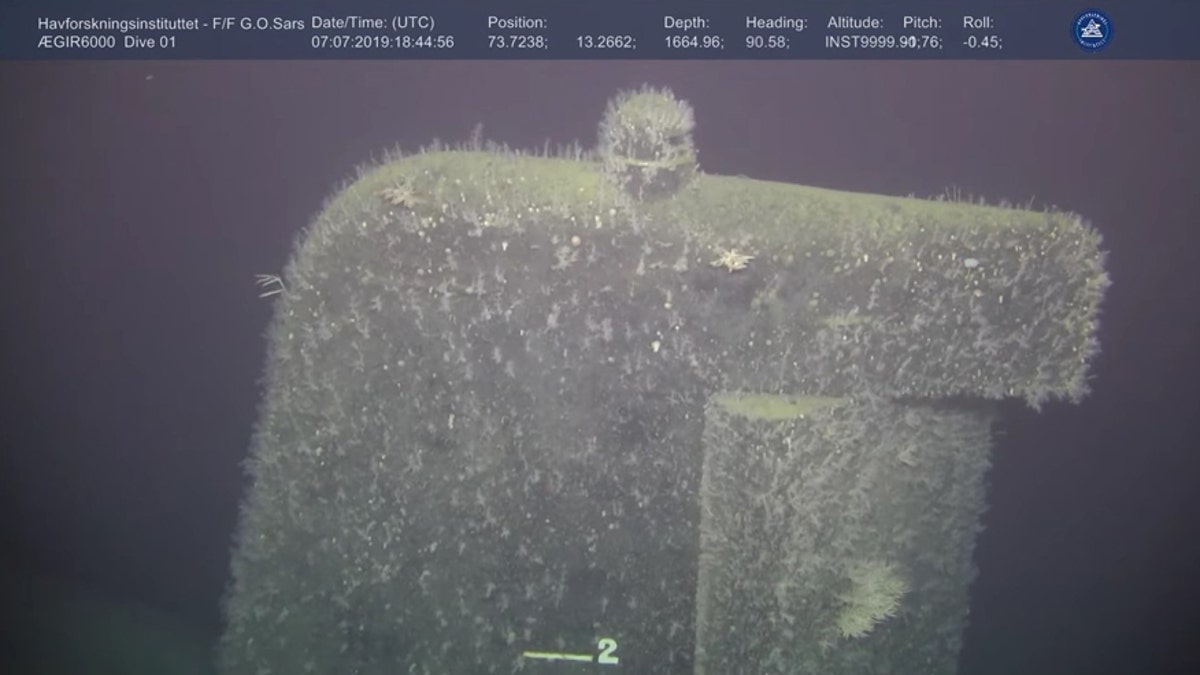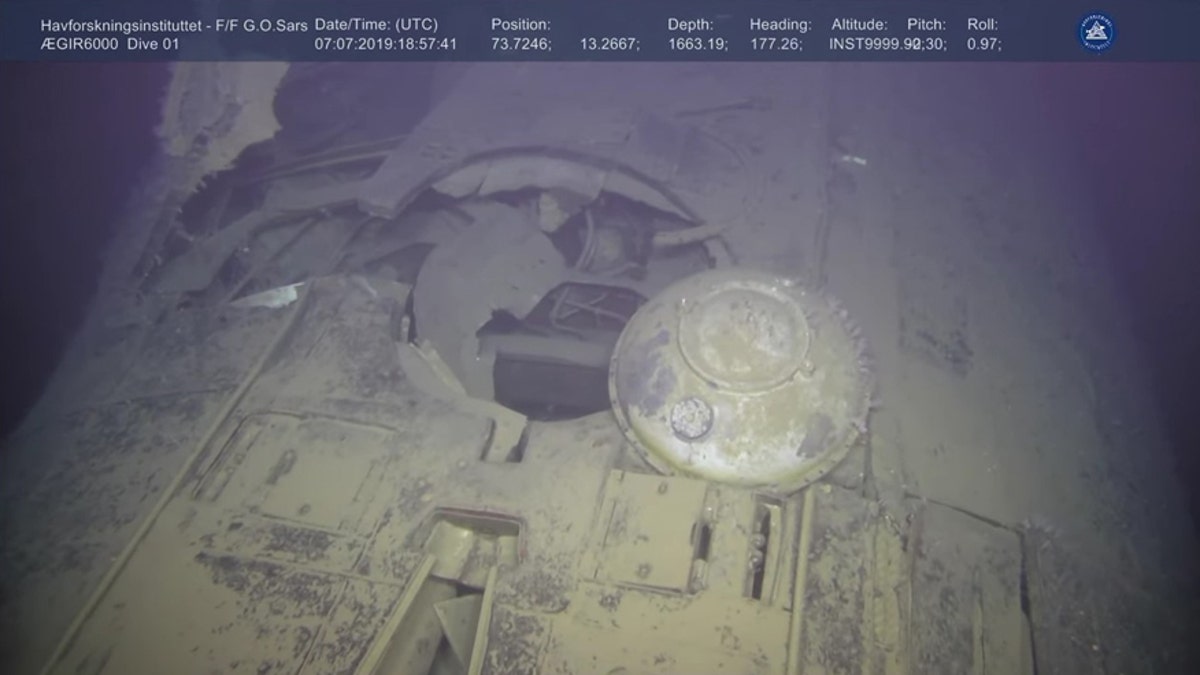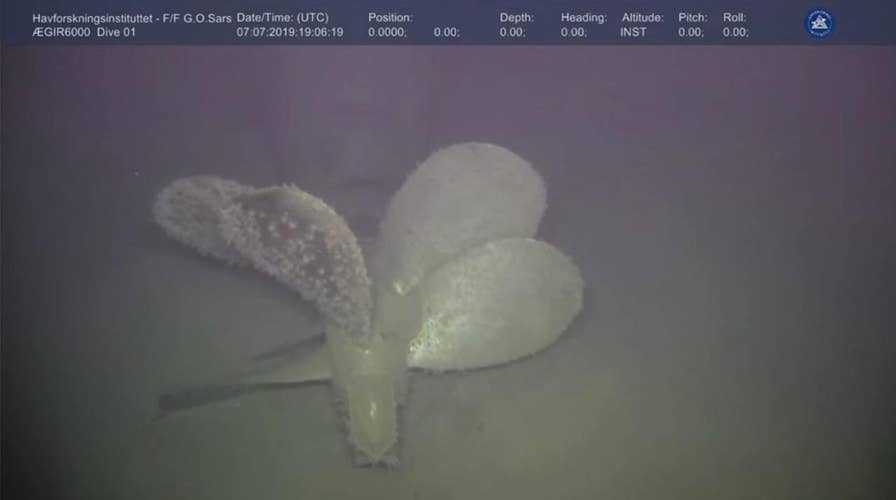Scientists discover radiation leak '100,000 times normal level' from Russian nuclear sub wreck
Scientists discovered a radiation leak '100,000 times normal level' stemming from a Russian nuclear submarine wreck.
Scientists have identified a radiation leak on the wreck of a Russian nuclear submarine that sank in Arctic waters in 1989.
The Soviet-era Komsomolets submarine sank off Norway’s Bear Island following a fire on board, which resulted in the loss of life of 42 of the 69 crewmen on board. Resting at a depth of 5,577 feet, the submarine's nuclear reactor and two nuclear warheads are still on board.
Scientists recently recorded radiation at the wreck site 100,000 times the normal level for the Norwegian Sea.
RUSSIA LAUNCHES HUGE 'DOOMSDAY' SUPERSUB
“Several samples taken in and around a ventilation duct on the wreck of the submarine contained far higher levels of radioactive caesium than you would normally find in the Norwegian Sea,” explained Norway’s Institute of Marine Research in a statement.

The submarine's conning tower. (Institute of Marine Research Norway/Ægir 6000)
The institute said that findings were around 100 Becquerel (Bq) per liter as opposed to around 0.001 Bq per liter elsewhere in the Norwegian Sea.
The highest level measured in a sample at the wreck site was 800,000 times higher than normal, according to the researchers.
CHERNOBYL'S RED FOREST MAPPED BY DRONES AS SCIENTISTS DISCOVER RADIOACTIVE HOTSPOTS
However, scientists noted that other samples from the same duct did not contain elevated levels of radiation.

A torpedo at the wreck site. (Institute of Marine Research Norway/Ægir 6000 )
“We took water samples from inside this particular duct because the Russians had documented leaks here both in the 1990s and more recently in 2007,” said Expedition Leader Hilde Elise Heldal, in a statement. “So we weren’t surprised to find high levels here.”
Heldal said that the radiation levels are not dangerously high, citing the permitted limit for radioactive caesium in food. “After the Chernobyl accident in 1986, Norwegian authorities set this limit to 600 Bq/kg”, she explained. “The levels we detected were clearly above what is normal in the oceans, but they weren’t alarmingly high.”
SCIENTISTS HAVE A NEW THEORY ON HOW THE CHERNOBYL DISASTER UNFOLDED
“What we have found during our survey has very little impact on Norwegian fish and seafood. In general, caesium levels in the Norwegian Sea are very low, and as the wreck is so deep, the pollution from Komsomolets is quickly diluted,” Heldal said.

Undersea drone Ægir 6000 captured footage of the Soviet-era Komsomolets submarine. (Institute of Marine Research Norway/Ægir 6000)
“Over the past few days we have also taken samples a few meters above the duct. We didn’t find any measurable levels of radioactive caesium there, unlike in the duct itself” added Justin Gwynn, a researcher at the Norwegian Radiation and Nuclear Safety Authority (DSA), in the statement.
The joint Norwegian-Russian expedition set off Saturday from Tromsoe, northern Norway, to study the wreck site. The Norwegian research vessel G.O. Sars arrived at the sub’s location Sunday and sent down AEgir 6000, an undersea drone, to analyze the vessel and capture eerie footage of the wreck.
BEWARE RADIOACTIVE WILD BOARS: HUNTERS IN SWEDEN CONCERNED ABOUT CHERNOBYL’S FRIGHTENING LEGACY
Video shows the ghostly mangled wreckage of the submarine’s hull, its conning tower, a propeller and a torpedo.

The submarine's wrecked hull. (Institute of Marine Research Norway/Ægir 6000)
Russia has suffered a number of high-profile submarine disasters.
Last week, 14 Russian seamen died in a fire on a Russian Navy research submersible in the Barents Sea. Officials withheld details of the tragedy, citing the utmost secrecy of the vessel's mission. Russia’s Defense Ministry said the sailors were killed by toxic fumes from the fire. Some others survived the fire but the military hasn't said how many.

The submarine sank off Norway’s Bear Island. (Institute of Marine Research Norway/Ægir 6000)
CHERNOBYL'S RADIOACTIVE 'WILDLIFE PRESERVE' SPAWNS GROWING WOLF POPULATION
Russian Defense Minister Sergei Shoigu said that the sub was on a research mission to measure sea depths in the Barents Sea.

The submarine sank in Arctic waters in 1989. (Institute of Marine Research Norway/Ægir 6000)
Officials didn't name the nuclear-powered vessel, but Russian media reported that it was Russia's most secret submersible, the Losharik.

The submarine's propeller. (Institute of Marine Research Norway/Ægir 6000)
CLICK HERE TO GET THE FOX NEWS APP

The Remotely-Operated Vehicle (ROV) AEgir 6000 working on the submarine wreck. (Institute of Marine Research Norway/Ægir 6000)
In 2000, the Kursk submarine sank during naval maneuvers in the Barents Sea, killing all 118 seamen onboard in Russia's worst submarine disaster.
Fox News’ Paulina Dedaj and The Associated Press contributed to this article. Follow James Rogers on Twitter @jamesjrogers

